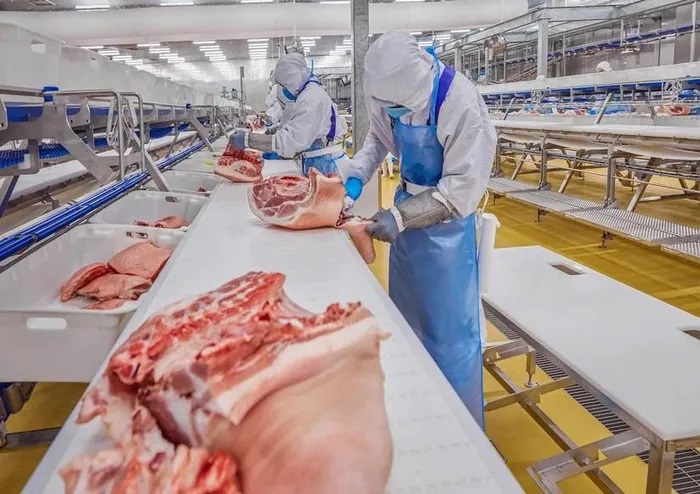The Import-Export Department of the Ministry of Industry and Trade cited sources from Rabobank's Q1/2024 report on global pork as saying that in 2024, some developing regions will continue to reduce their sow herds at different rates of decline.

China, the United States and some European countries are likely to see production decline or sustain in 2024 due to lower sow herds by the end of 2023. Epidemic pressures will further dampen the outlook for global production. Other challenges such as negative profit margins, oversupply and weak demand, are also important factors leading to the reduction of pig herds. Meanwhile, productivity will continue to improve in 2024, thanks to genetic advancements, better farm management and a cost-reduction strategy.
In China, in 2023 China's pork production will reach 57.94 million tons, an increase of 2.53 million tons (corresponding to an increase of 4.6%) compared to 2022. In 2023, the country has 726.62 million pigs sold, an increase of 26.68 million heads (corresponding to an increase of 3.8%) compared to 2022. By the end of 2023, China's pig herd inventory is 434.22 million, down 18.33 million heads (corresponding to a decrease of 4.1%) compared to the end of the previous year. Of these, there were 41.42 million sows, a decrease of 2.48 million heads (equivalent to a decrease of 5.7%).
The U.S. Department of Agriculture estimates China's pork and chicken consumption in 2024 will decline by 2.5% compared to 2023, while beef and veal consumption is predicted to increase by 1.6%. Weak demand has put farmers and traders under pressure after expanding livestock in recent years led to a glut of pork and poultry, prompting the Chinese government to buy tens of thousands of tonnes of pork in late 2023 to stock up in a bid to lift pork prices.
In Russia, according to Emeat's forecasts, Russian meat production in 2024 will increase by 2-3% compared to the previous year, up to 11.6-12 million tons, mainly due to an increase in pork production. According to Russia's Livestock Association, by 2024 the country could produce 6-7% more pork (between 300,000 and 500,000 tons of hogs). Russian beef production will increase by 2-4%, chicken production will decrease by 1-2%.
In 2023, Russia will export 743,500 tons of meat, an increase of almost 22% compared to 2022. In 2024, pig farmers hope to increase exports thanks to the opening of the Chinese market. Russia plans to export a minimum of 20,000 to 30,000 tonnes of pork to China in 2024.
Domestic market: livestock production is stable but consumption in February is still weak
In February 2024, the livestock situation across the country is stable, but pork consumption in the market remains dismal. Meanwhile, the price of live pigs in provinces and cities across the country fluctuated in opposite directions, prices decreased in the northern provinces, while increasing in the Central, Central Highlands and Southern regions.
In the Northern region, the price of live pigs in most provinces and cities at the end of February 2024 fluctuates between 56,000 - 57,000 VND/kg, down from 2,000 - 3,000 VND/kg compared to the end of January 2024. Meanwhile, in the Central, Central Highlands and Southern regions, the price of live pigs fluctuates between 54,000 - 58,000 VND / kg, up from 1,000 - 2,000 VND / kg compared to the end of January 2024.
According to many experts, the supply of hogs is stable due to the previous African swine fever epidemic, which has prevented people from promoting re-herding. In addition, recently, the authorities have well controlled the border routes to prevent pigs from being smuggled into Vietnam. If this is maintained well, the domestic livestock industry may prosper in the near future.
Source: Mekong Asean